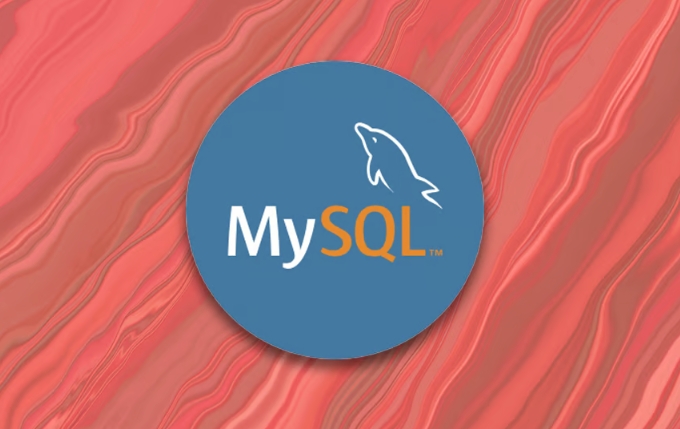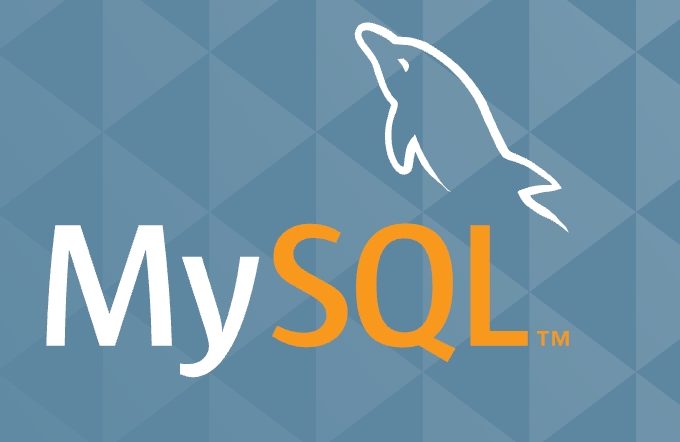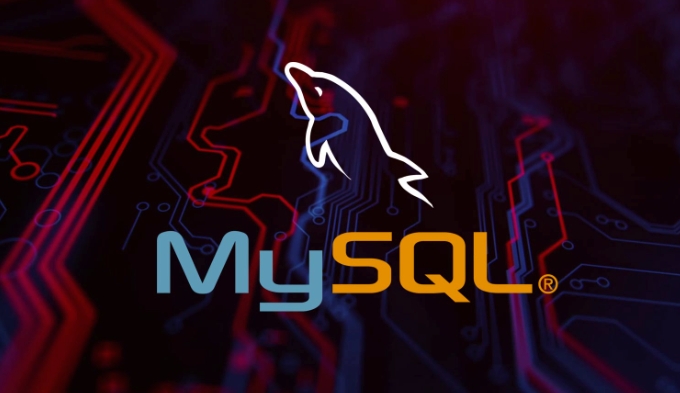使用mySQL中的mysqldump執行邏輯備份
mysqldump 是用於執行MySQL 數據庫邏輯備份的常用工具,它生成包含CREATE 和INSERT 語句的SQL 文件以重建數據庫。 1. 它不備份原始文件,而是將數據庫結構和內容轉換為可移植的SQL 命令;2. 適用於小型數據庫或選擇性恢復,不適合TB 級數據快速恢復;3. 常用選項包括--single-transaction、--databases、--all-databases、--routines 等;4. 恢復時使用mysql 命令導入,並可關閉外鍵檢查以提升速度;5. 建議定期測試備份、使用壓縮、自動化調度、命名含元數據並監控磁盤空間。

When you need to back up your MySQL databases, mysqldump is one of the most commonly used tools for performing logical backups. It generates SQL files that contain CREATE and INSERT statements needed to rebuild the database. This method is especially useful when you want to migrate data, restore selectively, or version-control schema changes.

What a Logical Backup with mysqldump Actually Does
A logical backup isn't a direct copy of your database files on disk — instead, it's a set of SQL statements that can recreate your database structure and contents. When you run mysqldump , it reads the tables from your running MySQL server and converts them into text-based SQL commands.

This means:
- You're not backing up raw
.ibdor.frmfiles. - The output is portable across different platforms and MySQL versions (to some extent).
- It's not the fastest way to back up huge databases, but it's flexible and easy to inspect or modify.
So if you're looking for something quick for disaster recovery of terabyte-scale data, this might not be the best choice. But for smaller databases or selective restores, it's solid.

Basic Command Structure and Common Options
The basic usage of mysqldump looks like this:
mysqldump [options] [db_name [tbl_name ...]]
Here are a few practical examples based on real-world scenarios:
Dump a single database:
mysqldump -u username -p dbname > backup.sql
Dump multiple databases:
mysqldump -u username -p --databases db1 db2 > backup.sql
Dump all databases:
mysqldump -u username -p --all-databases > backup.sql
Some options you'll often see:
-
--single-transaction: Helps get a consistent snapshot without locking tables (good for InnoDB). -
-hor--host: Connects to a remote MySQL server. -
--routines,--events,--triggers: Include stored routines, events, and triggers in the dump. -
--no-dataor-d: Only dump the schema, not the data.
If you're planning to use these dumps for restoring later, consider adding --add-drop-table or --add-drop-database so that existing tables are dropped before being recreated.
How to Restore From a Dump File
Restoring from a mysqldump file is straightforward. You just feed the SQL file back into the mysql command-line client:
mysql -u username -p dbname < backup.sql
But here's what people sometimes forget:
- If the database doesn't exist already, create it first.
- Make sure the user has proper privileges.
- If the dump includes multiple databases or uses
CREATE DATABASE, you might not need to specify a target database name.
Also, large dumps can take time. If you're restoring a multi-gigabyte file, consider disabling foreign key checks at the start:
SET foreign_key_checks = 0;
Then re-enable them after import:
SET foreign_key_checks = 1;
Just be cautious — turning off constraints can lead to inconsistencies if the data isn't clean.
Tips for Managing mysqldump Backups Effectively
Backups only help if they work when you need them. Here are a few tips to make your workflow smoother:
Test your backups regularly : Try restoring them somewhere safe to ensure they haven't been corrupted or missed something important.
Use compression : Pipe the output to
gzipto save space:mysqldump -u user -p dbname | gzip > backup.sql.gz
Automate with cron : Schedule regular backups using cron jobs. Just remember to handle rotation — old backups take up space too.
Include metadata in filenames : Add date or version info to your backup files so it's easier to track which one is current:
mysqldump -u user -p dbname > backup_$(date %F).sql
Monitor disk space : Especially if you keep daily backups, make sure your storage doesn't fill up unexpectedly.
You don't need anything fancy to start with mysqldump . Just a little planning and consistency go a long way.
基本上就這些。
以上是使用mySQL中的mysqldump執行邏輯備份的詳細內容。更多資訊請關注PHP中文網其他相關文章!

熱AI工具

Undress AI Tool
免費脫衣圖片

Undresser.AI Undress
人工智慧驅動的應用程序,用於創建逼真的裸體照片

AI Clothes Remover
用於從照片中去除衣服的線上人工智慧工具。

Clothoff.io
AI脫衣器

Video Face Swap
使用我們完全免費的人工智慧換臉工具,輕鬆在任何影片中換臉!

熱門文章

熱工具

記事本++7.3.1
好用且免費的程式碼編輯器

SublimeText3漢化版
中文版,非常好用

禪工作室 13.0.1
強大的PHP整合開發環境

Dreamweaver CS6
視覺化網頁開發工具

SublimeText3 Mac版
神級程式碼編輯軟體(SublimeText3)
 使用mySQL中的mysqldump執行邏輯備份
Jul 06, 2025 am 02:55 AM
使用mySQL中的mysqldump執行邏輯備份
Jul 06, 2025 am 02:55 AM
mysqldump是用於執行MySQL數據庫邏輯備份的常用工具,它生成包含CREATE和INSERT語句的SQL文件以重建數據庫。 1.它不備份原始文件,而是將數據庫結構和內容轉換為可移植的SQL命令;2.適用於小型數據庫或選擇性恢復,不適合TB級數據快速恢復;3.常用選項包括--single-transaction、--databases、--all-databases、--routines等;4.恢復時使用mysql命令導入,並可關閉外鍵檢查以提升速度;5.建議定期測試備份、使用壓縮、自動化調
 實施交易和了解MySQL中的酸性
Jul 08, 2025 am 02:50 AM
實施交易和了解MySQL中的酸性
Jul 08, 2025 am 02:50 AM
MySQL支持事務處理,使用InnoDB存儲引擎可確保數據一致性和完整性。 1.事務是一組SQL操作,要么全部成功,要么全部失敗回滾;2.ACID屬性包括原子性、一致性、隔離性和持久性;3.手動控制事務的語句為STARTTRANSACTION、COMMIT和ROLLBACK;4.四種隔離級別包括讀未提交、讀已提交、可重複讀和串行化;5.正確使用事務需注意避免長時間運行、關閉自動提交、合理處理鎖及異常。通過這些機制,MySQL可實現高可靠與並發控制。
 在MySQL中設置異步主要復制複製
Jul 06, 2025 am 02:52 AM
在MySQL中設置異步主要復制複製
Jul 06, 2025 am 02:52 AM
要設置MySQL的異步主從復制,請按以下步驟操作:1.準備主服務器,啟用二進制日誌並設置唯一server-id,創建複製用戶並記錄當前日誌位置;2.使用mysqldump備份主庫數據並導入到從服務器;3.配置從服務器的server-id和relay-log,使用CHANGEMASTER命令連接主庫並啟動複製線程;4.檢查常見問題,如網絡、權限、數據一致性及自增沖突,並監控複製延遲。按照上述步驟操作可確保配置正確完成。
 處理MySQL中的角色集和校正問題
Jul 08, 2025 am 02:51 AM
處理MySQL中的角色集和校正問題
Jul 08, 2025 am 02:51 AM
字符集和排序規則問題常見於跨平台遷移或多人開發時,導致亂碼或查詢不一致。核心解決方法有三:一要檢查並統一數據庫、表、字段的字符集為utf8mb4,通過SHOWCREATEDATABASE/TABLE查看,用ALTER語句修改;二要在客戶端連接時指定utf8mb4字符集,在連接參數或執行SETNAMES中設置;三要合理選擇排序規則,推薦使用utf8mb4_unicode_ci以確保比較和排序準確性,並在建庫建表時指定或通過ALTER修改。
 使用命令行客戶端連接到MySQL數據庫
Jul 07, 2025 am 01:50 AM
使用命令行客戶端連接到MySQL數據庫
Jul 07, 2025 am 01:50 AM
連接MySQL數據庫最直接的方式是使用命令行客戶端。首先輸入mysql-u用戶名-p並正確輸入密碼即可進入交互式界面;若連接遠程數據庫,需添加-h參數指定主機地址。其次,可直接在登錄時切換到特定數據庫或執行SQL文件,如mysql-u用戶名-p數據庫名或mysql-u用戶名-p數據庫名
 管理MySQL中的角色集和校正
Jul 07, 2025 am 01:41 AM
管理MySQL中的角色集和校正
Jul 07, 2025 am 01:41 AM
MySQL中字符集和排序規則的設置至關重要,影響數據存儲、查詢效率及一致性。首先,字符集決定可存儲字符範圍,如utf8mb4支持中文和表情符號;排序規則控製字符比較方式,如utf8mb4_unicode_ci不區分大小寫,utf8mb4_bin為二進制比較。其次,字符集可在服務器、數據庫、表、列多個層級設置,建議統一使用utf8mb4和utf8mb4_unicode_ci避免衝突。再者,亂碼問題常由連接、存儲或程序端字符集不一致引起,需逐層排查並統一設置。此外,導出導入時應指定字符集以防止轉換錯
 設計強大的MySQL數據庫備份策略
Jul 08, 2025 am 02:45 AM
設計強大的MySQL數據庫備份策略
Jul 08, 2025 am 02:45 AM
要設計一個靠譜的MySQL備份方案,1.首先明確RTO和RPO指標,根據業務可接受的停機時間和數據丟失範圍確定備份頻率與方式;2.採用混合備份策略,結合邏輯備份(如mysqldump)、物理備份(如PerconaXtraBackup)和二進制日誌(binlog),實現快速恢復與最小數據丟失;3.定期測試恢復流程,確保備份有效性並熟悉恢復操作;4.注重存儲安全,包括異地存儲、加密保護、版本保留策略及備份任務監控。
 使用MySQL 8中的常見表表達式(CTE)
Jul 12, 2025 am 02:23 AM
使用MySQL 8中的常見表表達式(CTE)
Jul 12, 2025 am 02:23 AM
CTEs是MySQL8.0引入的特性,提升複雜查詢的可讀性與維護性。 1.CTE是臨時結果集,僅在當前查詢中有效,結構清晰,支持重複引用;2.相比子查詢,CTE更易讀、可重用且支持遞歸;3.遞歸CTE可處理層級數據,如組織結構,需包含初始查詢與遞歸部分;4.使用建議包括避免濫用、命名規範、關注性能及調試方法。







